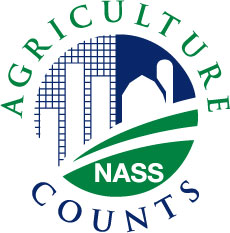Overview
The census is a complete count of U.S. farms and ranches and the people who operate them. The Census looks at land use and ownership, operator characteristics, production practices, income and expenditures and many other areas. This picture, when compared to earlier censuses, helps to measure trends and new developments in the agricultural sector of the nation's economy.
Title 7 of the United States Code requires all those who receive a census report form to respond – even if they did not operate a farm or ranch during the census year. The same law protects the confidentiality of all census respondents. NASS uses the information only for statistical purposes and publishes data only in tabulated totals. The report cannot be used for purposes of taxation, investigation or regulation. The privacy of individual census records is also protected from disclosure through the Freedom of Information Act.
For census purposes, a farm is defined as a place from which $1,000 or more of agricultural products were produced and sold, or normally would have been sold, during the census year. This farm definition has changed nine times throughout history and the current definition has been in effect since 1974.
History
The first Census of Agriculture was taken in 1840 as part of the sixth decennial population census. The census remained a part of the decennial census through 1950, with separate mid-decade Censuses of Agriculture taken in 1925, 1935 and 1945. As time passed, census years were adjusted until the reference year coincided with the economic censuses covering other sectors of the nation's economy. Currently, the Census of Agriculture is conducted for years ending in 2 and 7.
The 1997 Census of Agriculture has historical significance because it was the first conducted by NASS after the 1997 Appropriations Act shifted responsibility of the Census of Agriculture from the U.S. Census Bureau, which is part of the U.S. Department of Commerce, to USDA.
This page is based on this
Wikipedia article Text is available under the
CC BY-SA 4.0 license; additional terms may apply.
Images, videos and audio are available under their respective licenses.


